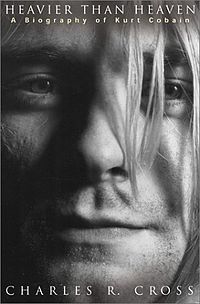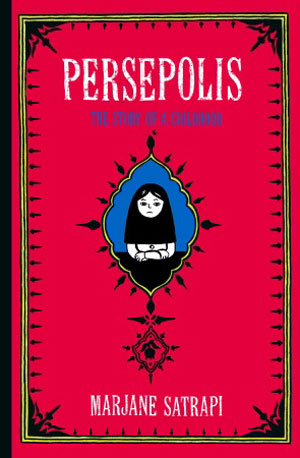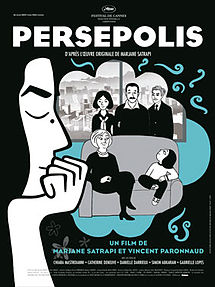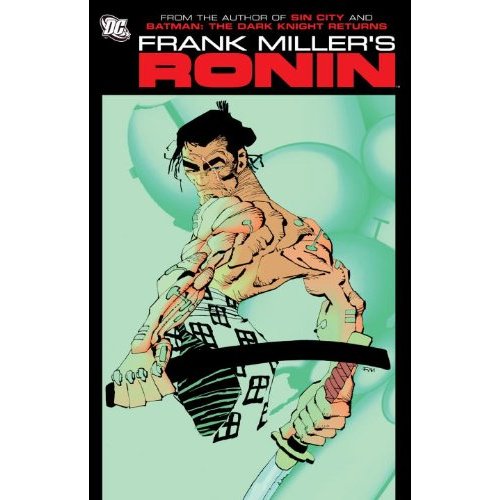
HTH
Heavier Than Heaven – While I don’t still listen to Nirvana much, I can’t deny that when “Smells Like Teen Spirit” came out it was really a triumph for people who liked guitar music to hear it constantly on the radio; and being a young university student in those days, I really felt a lot of the frustration that was expressed in the song. It was a great time for music, with tons of really great bands coming to the fore – the explosion of the Seattle scene offered a rich back story of important bands to investigate that included Nirvana, Tad, Soundgarden, the Melvins, and all of the hinterland bands that inspired them; all of these were a breath of fresh air on top of other great music coming from other parts at the time, like Guns N’ Roses, Faith No More, Warrior Soul, and so many others (in the UK there were the Jesus and Mary Chain, Stone Roses, the Cure, the Sisters of Mercy, Pop Will Eat Itself, so many many many…).
Heavier Than Heaven is a great introduction to this world, communicated through the eyes of its greatest son, Kurt Cobain. Providing some background to the story, we find ourselves in Aberdeen, Washington, actually even more out-of-the-way than even Seattle was in those days before Microsoft and Starbucks, when Boeing was the only big name in the region, and where the only bands that had a Seattle connection were Heart (who had to go to Canada to get their career going) and Jimi Hendrix, who went to London. Through extensive interviews with dozens of key people in Cobain’s life, author Charles Cross pieces together the life of a young boy, born into a beautiful-but-poor working class family, the first son and first grandson in the family, doted upon by all the relatives and blessed with a life filled with great joy and light; this sours quickly as the parents divorce (the reason why is never discovered, at least not by Cross), and into young Kurt’s life come financial difficulties, moodiness, school challenges, general runtiness, an identity crisis, and an aimlessness only cured by the blessing of good music and being in a band; there’s also mental illness in the family, with several uncles on his father’s side committing suicide (he apparently claimed that he has “suicide genes”). Cobain comes across as a pretty horrible kid, a nightmare to his parents, prone to doing shitty things like torturing cats, drawing deformed babies and other cracked anatomy, while putting himself out of reach emotionally. This turned around temporarily as his band picked up in popularity, but then things quickly went downhill with his drug use. Ever the selfish individual, he ultimately took himself away from the people who committed to him (and to his baby, whose love for him was the only one that was unconditional). He also went on bouts of puritanism, refusing any booze or drugs and preaching to those around him who were partaking; yes, a strange individual, even if he was blessed with musical talent, success, and good looks.
The roots of his problems seemed easy to spot all along:
Ryan Aigner lived one block away and from the moment he met Kurt, he remembered daily conversations about death. Once Ryan asked Kurt, “What are you going to do when you’re thirty:” “I’m not worried about what’s going to happen when I’m thirty,” Kurt replied in the same tone he would use to discuss a broken spark plug, “because I’m never going to make it to thirty. You know what life is like after thirty – I don’t want that.” The concept was so foreign to Ryan, who viewed the world with a young man’s sense of possibility, he was momentarily speechless. Ryan could recognize a torment inside Kurt. “He was the shape of suicide. He looked like suicide, he walked like suicide, and he talked about suicide.”
Cross identifies multiple anxieties in his life, one being that his golden pubes didn’t make an appearance as early for Kurt as they did for others, provoking embarrassing teasing for our sensitive little lout (there’s also the weird point made how Courtney Love snipped some of these pubes at his funeral). There’s the story of how he got arrested for writing “Ain’t got no how watchamacallit”. Cobain was a drifter, living alternately at the house of his father, his mother, and then a string of other homes and crash pads. Cross describes patterns in Cobain’s life as being “intimacy, conflict, banishment, isolation”. Even at age 20, Cobain was already binging on drugs, then drying out, while living in a shack and abusing pot, acid, beer, or huffing aerosol, getting hammered in the middle of the day. Cross claims to identify his first sexual encounter, which got cross-wired somehow.
He was afraid of full-time work, and was afraid of injuring his guitar-playing hand, claiming that if he cut his hands and was unable to play, it would end his life. There’s the weird tale of the accidental death of his pet rat during one spider-hunting episode, and the weird diary entry he made about it.
He was a slob, and Cross indulges from time to time in humor when he describes Kurts malcontentism:
He would rise at around noon and eat a brunch of sorts. Kraft Macaroni and Cheese was his favorite food. Having tried other brands, his delicate palate had determined that when it came to processed cheese and pasta, Kraft had earned its role as the market leader.
Cross also describes his endless journal writing and the strange art projects he engaged in, as well as his weird doll collecting and dedication to Speed Racer’s monkey Chim Chim and other pop culturisms. He also describes the strange early relationships that he had, including a doting girlfriend in Tracy Marander, Tobi Vail of Bikini Kill, and Boston train station singer Mary Lou Lord. After having chosen the name Nirvana, he had to explain what it was, and he considered himself a Buddhist at the time, “though his only practice of this faith was having watched a late-night television program [on the religion].”
As a young band, Kurt poured his energy into getting this part of his career going – the only option he had for the fame he bragged he’d achieve, really. Interesting that Nirvana shopped their early recordings to SST, and even offered to pay Touch ‘N’ Go to release it, eventually settling with local label Sub Pop (with whom he’d eventually battle). “My opinion on them was that they were not that original, that they were by-the-numbers alternative,” Greg Ginn of SST is quoted as saying in the book. “It wasn’t bad, but it wasn’t great either.” Nobody at Touch ‘N’ Go remembers getting the demo. Mark Arm of Mudhoney dismissed the demo as being “similar to Skin Yard, but not as good.” Skin Yard? Interesting anecdote about how Kurt wanted to call the first album Too Many Humans (like the Fear song?), but went with Bleach after having seen an anti-AIDS poster that said “Bleach your works.”
Cross finds an interesting description of the band from an early review in The Rocket. “Nirvana careens from one end of the thrash spectrum to the other, giving a nod towards garage grunge, alternative noise, and hell-raising metal without swearing allegiance to any of them.” There’s a groovy description of that early tour of the UK (didn’t every punk band go through this?) where they found a better-than-expected reception. The tour was with Tad, fronted by 300-pound Tad Doyle, whose “freakish obesity” lent the tour its title, Heavier Than Heaven (and now also this book’s).
Chapter 13 chronicles the start of the final phase of Cobain’s life, the one that was dominated by heroin. Ironically, he had a fear of needles, and once chided a friend who wanted to try it (irony?). “Why do you want to kill yourself? Why do you want to die so badly?”, he apparently told his friend. It it also leads into Chapter 14, which chronicles another potentially fatal addiction – to Courtney Love. While Cross is generally sympathetic to Love, nothing can deter the sense of danger that she brought into his life. In their first encounter, she told him she looked like Dave Pirner of Soul Asylum; he wrestled her to the ground, even though she was bigger than him (what a match!). Living Colour was playing on the jukebox!!! He’d met “the coolest girl in the world”, she’d met a life-mate; they tied up quasi-relationships with other partners like Billy Corgan and Mary Lou Lord, and got married.
Lots of details here – I didn’t know, for example, that Love knew Dave Grohl before Grohl knew Kurt, via her friend Jennifer Finch, Grohl’s girlfriend at the time. Like, wow, man! Around that time she also sent him a heart-shaped box. Nice… The band got kicked out of their own album launch party for Nevermind. Fame caught up with him – one night, after an in-store, Kurt signed autographs on the “Sliver” single – a song he wrote about his grandparents – for two guys from the town his grandparents lived in. Surreal?!?!? It was at that point that he realised he was famous, and when things started to get really weird. “It was more than we bargained for,” said Krist Novoselic.
There’s an interesting anecdote about the night Nirvana played Boston on September 22nd:
Kurt was looking forward to seeing the Melvins on this rare night off. Yet when he tried to talk his way into the club, the doorman hadn’t heard of Nirvana. Mary Lou Lord, a Boston singer-songwriter who was standing by the door, chirped in to say she’d heard of Nirvana and they were playing the next night. This failed to sway the doorman, and Kurt finally paid the cover.
Once inside, Kurt turned his attention to Lord, rather than his old friends. When Lord said she was a musician who played the subway platform, he asked her favorite bands, and she listed the Pastels, the Vaselines, David Johnston, and Teenage Fanclub. “Bullshit,” replied Kurt. “Those are my favorite bands, in order.!” He forced her to name songs by each artist to prove she wasn’t pulling his leg. They talked for hours, and Lord gave him a ride on her bicycle’s handlebars. They ended up talking all night, and the next day Kurt went to her apartment, where he saw a picture of Lester Bangs hanging on the wall. He asked Lord to do a song, and when she performed two tunes from the yet-to-be-released Nevermind, he felt like he’d been bewitched by this rosy-cheeked girl from Salem, Mass.
Seems like the early record chart rise of Nevermind happened by itself – the record company didn’t really do much promotion, and they were caught short on copies of the album itself. But those early days of success seemingly (or literally) didn’t register any impact with Kurt. At one backstage meeting with old friends, Cross records the following incident:
Steve Schillinger, once one of Kurt’s closest friends and a member of the family that had given him shelter when he was sleeping in a cardboard box [told him] “You’re really famous now, Cobain. You are on television, like, every three hours.”
“I didn’t really notice,” Kurt said, pausing for a moment to search for the classic “Cling-On” comeback that would disarm this condition of fame, as if words alone could halt something that was now unstoppable. “I don’t know about that,” Kurt replied, sounding very young. ” I don’t have a TV in the car I live in.”
Things got better, but things also got worse… over several years of record company voodoo, drugs, and surreal hijinx. The band recorded another album, did a masterpiece live album on MTV, and hit the road. The problems didn’t go away. Cook recounts the Munich show before his Rome suicide attempt, when the Melvins opened (“he loved the Melvins more than he loved Nirvana”). That day Kurt had called his cousin Art Cobain, with whom he hadn’t seen in nearly 20 years, and after the Melvins played Kurt met Buzz Osbourne for a complaint session.
Buzz had never seen Kurt so distraught, not even when Kurt had been kicked out of [his mother] Wendy’s house back in high school. Kurt announced he was going to break up the band, fire his management, and divorce Courtney. Before he walked onstage, Kurrt announced to Buzz, ” I should just be doing this solo,” “In retrospect,” Buzz observed, “he was talking about his entire life.”
Seventy minutes later, Nirvana’s show was over, prematurely ended by Kurt. It had been a standard set, but, strangely, had included two covers by the Cars – “My Best Friend’s Girl,” and “Moving In Stereo” – and after this latter tune, Kurt walked offstage.
Everything comes to and end, and the end of this book is also the end of its subject’s life. But somehow the book doesn’t give a satisfactory description of the final days of Cobain’s life. Maybe that’s the point, though – there was so much anarchy, so many scumbags around him with things to hide, that no decent recreation was possible. He died alone, probably, and miserably – spiked with a deadly dose of heroin and a shotgun blast in the brain. A sad destiny, but probably one he had been preparing for. It’s like Guy Clark said when he played an elegy for Townes Van Zandt: “I booked this gig 30 years ago.”
He was only two years old than me by birth, but I’ve lived (we all have) 19 more than he did. I’d never give those 19 years up for anything!
RIP Kurt Cobain, 1967-1994.










